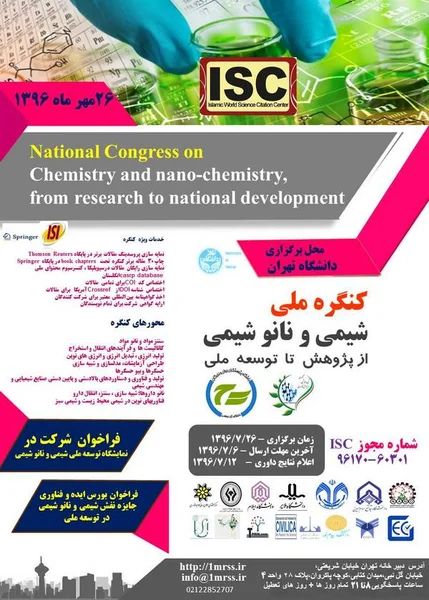-
supported liquid membrane along with carbon nanotubes and nano graphene oxide for the separation of cu(ii) ions using tributyl phosphate (tbp) as carrier: optimization by d-optimal surface response methodology and artificial neural networks coupled genetic algorithm (ann-ga)
جزئیات بیشتر مقاله- تاریخ ارائه: 1396/07/16
- تاریخ انتشار در تی پی بین: 1396/07/16
- تعداد بازدید: 532
- تعداد پرسش و پاسخ ها: 0
- شماره تماس دبیرخانه رویداد: -
the present study describes s transportation of cu(ii) ions across supported liquid membrane system containing tributyl phosphate (tbp) as carrier which was impregnated on to the teflon supported membrane(ptfe) incorporated with carbon nanotube and nano graphene oxide as sorbent interface. the best organic solvent and the operating conditions of the extraction and stripping for cu(ii) ions has been evaluated by one factor at a time(ofat) method. the influences of several variables, including cu(ii) ions concentration, percentage of tributyl phosphate (as carrier), ph and sulfuric acid concentration were also studied using artificial neural networks-genetic algorithm (annga) and d- optimal response surface methodology to transport of cu(ii) ions from the feed to stripping phase in supported liquid membrane system(slm). comparison of the results achieved using proposed models, showed the ann-ga was better than the rsm model for prediction of transportation of cu(ii) ions using teflon membrane impregnated with tbp with extraction efficiency of 50% and stripping efficiency of 70% with fitness function value of 0.3057. using ann-ga, optimum conditions were set at 25, 2.5, 7 and 1 for cu(ii) ions concentration(ppm), percentage of carrier (%), ph and sulfuric acid concentration(m), respectively. then 0.02 g of carbon nanotubes and nano graphene oxide were added separately and the proposed procedure was carried out. the results showed that with addition of mentioned nano materials, the extraction and stripping efficiency increased to 70 and 69%, respectively, for carbon nanotubes and 65 and 90% for nano grapheme oxide. the present study showed that the developed slm can be applied effectively to extract cu(ii) ions from aqueous solutions.
حوزه های تحت پوشش رویداد
مقالات جدیدترین رویدادها
-
استفاده از تحلیل اهمیت-عملکرد در ارائه الگوی مدیریت خلاقیت سازمانی و ارائه راهکار جهت بهبود
-
بررسی تاثیر ارزش وجوه نقد مازاد بر ساختار سرمایه شرکت های پذیرفته شده در بورس اوراق بهادار تهران
-
بررسی تأثیر سطح افشای ریسک بر قرارداد بدهی شرکت های پذیرفته شده در بورس اوراق بهادار تهران
-
بررسی تأثیر رتبه بندی اعتباری مبتنی بر مدل امتیاز بازار نوظهور بر نقد شوندگی سهام با تأکید بر خصوصی سازی شرکت ها
-
تأثیر آمیخته بازاریابی پوشاک ایرانی بر تصویر ذهنی مشتری پوشاک ایرانی (هاکوپیان)
-
بررسی تغییر اندازه سنگ دانه ها بر روی خواص رئولوژیکی و مکانیکی بتن خود تراکم سبک ساخته شده با پوکه معدنی
-
شهرسازی و توسعه ناپایدار شهری؛ مطالعه موردی متروپل تبریز
-
بررسی مدلهای موجود برای هدایت حرارتی و ویسکوزیته در نانوسیال ها
-
بررسی آسیب شناسی آموزش مجازی درس علوم در دوره پیش دبستانی از منظر مربیان شهر میاندوآب
-
biosynthesis of benzoylformic acid from benzoyl cyanide by a newly isolated rhodococcus sp. cczu10-1 in toluene–water biphasic system
مقالات جدیدترین ژورنال ها
-
مدیریت و بررسی افسردگی دانش آموزان دختر مقطع متوسطه دوم در دروان کرونا در شهرستان دزفول
-
مدیریت و بررسی خرد سیاسی در اندیشه ی فردوسی در ادب ایران
-
واکاوی و مدیریت توصیفی قلمدان(جاکلیدی)ضریح در موزه آستان قدس رضوی
-
بررسی تاثیر خلاقیت، دانش و انگیزه کارکنان بر پیشنهادات نوآورانه کارکنان ( مورد مطالعه: هتل های 3 و 4 ستاره استان کرمان)
-
بررسی تاثیر کیفیت سیستم های اطلاعاتی بر تصمیم گیری موفق در شرکتهای تولیدی استان اصفهان (مورد مطالعه: مدیران شرکتهای تولیدی استان اصفهان)
-
نقش مدیریت شهری در مناطق حاشیه نشین با تاکید بر ایران
-
مدیریت و کاهش بهای تمام شده، با محوریت طبقه بندی طبیعی هزینه ها در کسب کارهای کارآفرینانه با رویکرد ارزش آفرینی
-
فرآیند پیش نگری ، تاثیرات آن در عکاسی فتوشیمیایی و نحوه احیاء آن در عکاسی دیجیتال
-
scrutinization of the relationship between organizational agility and the application of information and communication technology in the education organization of shirvan township in the year 2015
-
investigating the seismic performance of steel moment-resisting frames by using damage index




سوال خود را در مورد این مقاله مطرح نمایید :